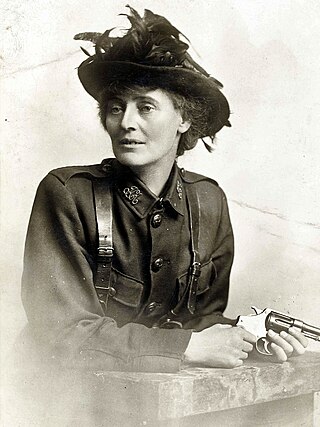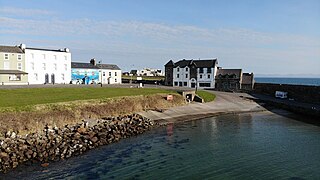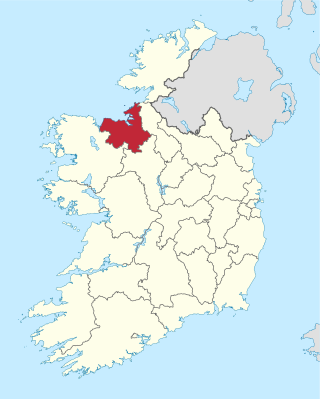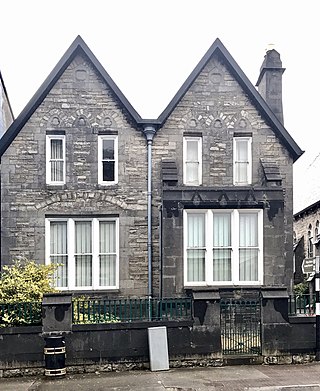
Constance Georgine Markievicz, also known as Countess Markievicz and Madame Markievicz, was an Irish politician, revolutionary, nationalist, suffragist, socialist, and the first woman elected to the Westminster Parliament. She was elected Minister for Labour in the First Dáil, becoming the second female cabinet minister in Europe. She served as a Teachta Dála for the Dublin South constituency from 1921 to 1922 and 1923 to 1927. She was a Member of Parliament (MP) for Dublin St Patrick's from 1918 to 1922.

Ivana Catherine Bacik is an Irish politician who has been the Leader of the Labour Party since 24 March 2022 and a Teachta Dála (TD) for the Dublin Bay South constituency since winning a by-election on 9 July 2021. Bacik previously served as Leader of the Labour Party in the Seanad from 2011 to 2021, and a Senator for the Dublin University constituency from 2007 to 2021. She previously served as Deputy leader of the Seanad from 2011 to 2016.

Ballymote is a market town in southern County Sligo, Ireland. It is around 20 km south of Sligo town in the province of Connacht, which is in the north-west of Ireland. Ballymote lies in the barony of Corran. It is a commuter town with a strong history of independent enterprises along with firm local health, school, and transport services. Ballymote is on the main Dublin to Sligo Train Line, and 10 minutes from the N4 / N17 roads. The town serves a large hinterland area in south east County Sligo.

Eva Selina Laura Gore-Booth was an Irish poet, theologian, and dramatist, and a committed suffragist, social worker and labour activist. She was born at Lissadell House, County Sligo, the younger sister of Constance Gore-Booth, later known as the Countess Markievicz.

Mullaghmore is a village on the Mullaghmore Peninsula in County Sligo, Ireland. It is a holiday destination with a skyline dominated by Benbulben mountain. It is in the barony of Carbury and parish of Ahamlish.
There have been three baronetcies created for members of the Gore family, all in the Baronetage of Ireland. All three titles are extant. The family also holds two earldoms and a barony.

Sir Henry William Gore-Booth, 5th Baronet, was a notable Arctic explorer, adventurer and landowner from Lissadell House, Sligo, Ireland.
Sir Robert Gore-Booth, 4th Baronet was an Anglo-Irish politician and landowner, who built Lissadell House, located in County Sligo.
Lissadell is the name of an area in north County Sligo on Magherow peninsula west of Benbulben. Until the late 16th century Lissadell was part of the tuath of Cairbre Drom Cliabh under the Lords of Sligo, Ó Conchobhair Sligigh. Lissadell is also now the name of the demesne which is attached to Lissadell House.
The National Asset Management Agency is a body created by the government of Ireland in late 2009 in response to the Irish financial crisis and the deflation of the Irish property bubble.
The High Sheriff of Sligo was the British Crown's judicial representative in County Sligo, Ireland, from the 16th century until 1922, when the office was abolished in the new Free State and replaced by the office of Sligo County Sheriff. The sheriff had judicial, electoral, ceremonial and administrative functions and executed High Court Writs. In 1908, an Order in Council made the Lord-Lieutenant the Sovereign's prime representative in a county and reduced the High Sheriff's precedence. However the sheriff retained his responsibilities for the preservation of law and order in the county. The usual procedure for appointing the sheriff from 1660 onwards was that three persons were nominated at the beginning of each year from the county and the Lord Lieutenant then appointed his choice as High Sheriff for the remainder of the year. Often the other nominees were appointed as under-sheriffs. Sometimes a sheriff did not fulfil his entire term through death or other event and another sheriff was then appointed for the remainder of the year. The dates given hereunder are the dates of appointment. All addresses are in County Sligo unless stated otherwise.
Sir Robert Booth (1626–1681) was an English-born judge who had a highly successful career in Ireland, where he held the offices of Chief Justice of the Irish Common Pleas and Lord Chief Justice of the King's Bench in Ireland.

An election to all 18 seats on Sligo County Council took place on 23 May 2014 as part of the 2014 Irish local elections, a reduction from 25 seats at the 2009 election. County Sligo was divided into two local electoral areas (LEAs) to elect councilors for a five-year term of officeon the electoral system of proportional representation by means of the single transferable vote (PR-STV). In addition, the borough council of Sligo was abolished.

Lieutenant-Colonel Edward Henry Cooper was an Irish officer in the British Army, a landlord in County Sligo, and a Conservative politician.

Sligo County Museum is a museum dedicated to the history of County Sligo. The museum is housed in a former manse on Stephen Street, Sligo town.
Ethel Rhind was an Irish stained-glass and mosaic artist, who was associated with An Túr Gloine.
Michael Smith had the idea for the reward that led to Ireland's Planning Tribunal (1997–2012), was chairman of An Taisce, Ireland's National Trust and largest campaigning environmental NGO (1999–2003), and an activist opposing bad planning and environmental degradation; and is now editor of leftist magazine, Village.
Mary Finlay Geoghegan is a retired Irish judge and lawyer. She was appointed to the High Court in 2002 and promoted to a newly established Court of Appeal from 2014. She became a Judge of the Supreme Court of Ireland from 2017, before retiring in 2019.

Frank O'Rourke is an Irish former Fianna Fáil politician who served as a Teachta Dála (TD) for the Kildare North constituency from 2016 to 2020.

A by-election was held in the Dáil Éireann constituency of Dublin Bay South in Ireland on Thursday, 8 July 2021, to fill the vacancy left by the resignation of the Fine Gael TD Eoghan Murphy. The by-election was won by Senator Ivana Bacik of the Labour Party.













